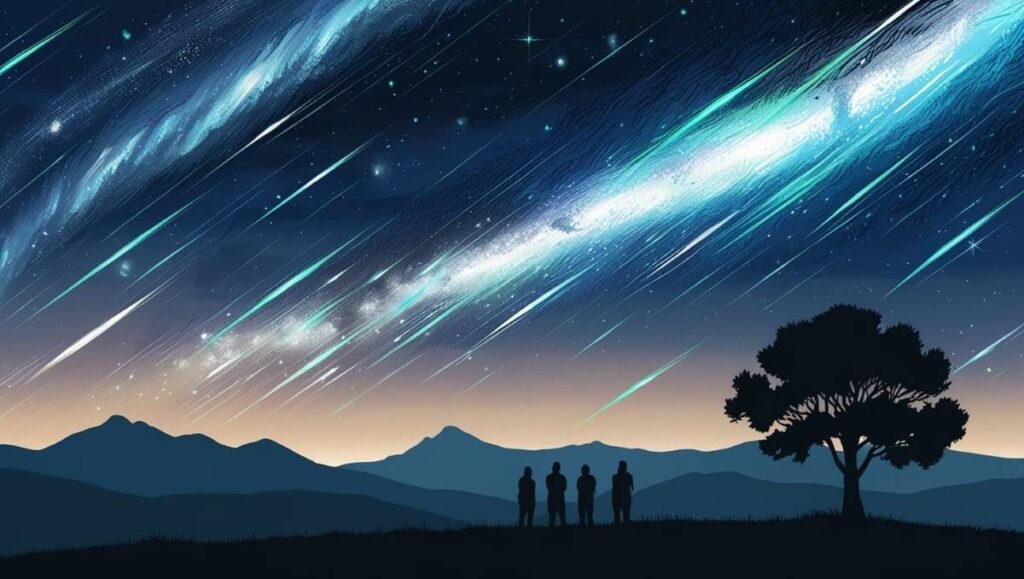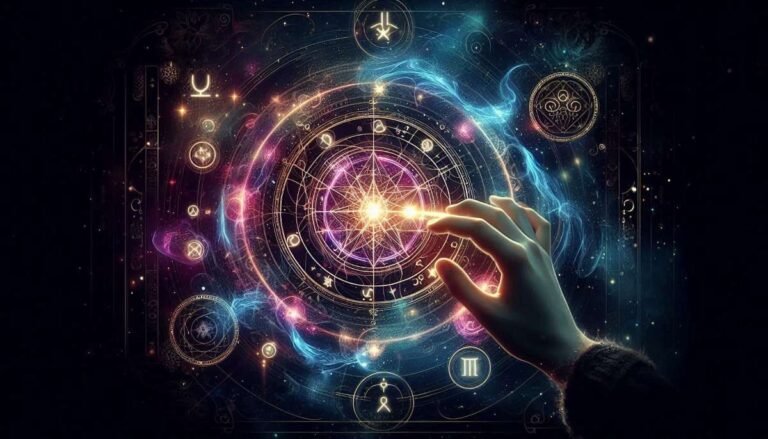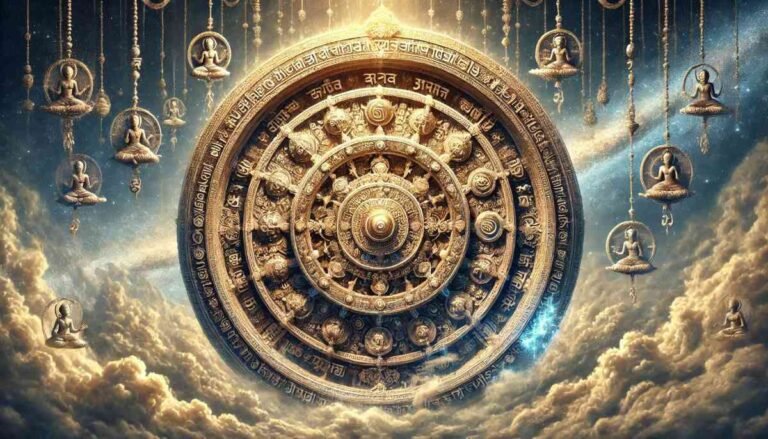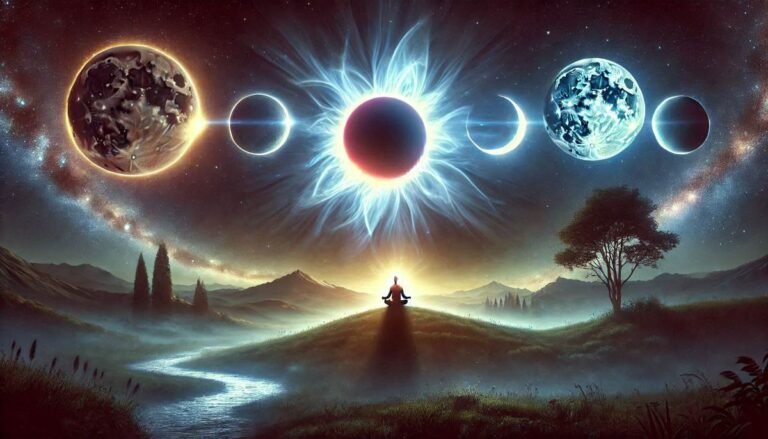
The night sky in December offers some of the most breathtaking celestial events, and the Geminid Meteor Shower is one of its crown jewels. Known for its stunning display of multi-colored meteors, this annual phenomenon promises an unforgettable experience for stargazers around the globe. Taking place on the nights of December 14 and 15, the Geminids are set to peak, offering up to 120 meteors per hour under optimal conditions.
This blog explores everything you need to know about the Geminid Meteor Shower, from its origins to the best viewing tips, and connects it to other fascinating celestial events this December.
Table Of Contents
- What Are the Geminids?
- Why Are the Geminids So Special?
- How to Watch the Geminid Meteor Shower
- A Celestial December: Connecting the Dots
- Astrological Significance of the Geminids
- The Science Behind the Spectacle
- What If You Miss the Peak?
- The Geminids and You: A Cosmic Connection
- Conclusion: December’s Celestial Symphony
What Are the Geminids?
The Geminid Meteor Shower is unique among meteor showers because it originates not from a comet but an asteroid—3200 Phaethon. Discovered in 1983, Phaethon’s rocky debris burns up upon entering Earth’s atmosphere, creating the vibrant streaks of light we see. Unlike comet-based showers, the Geminids produce meteors that are brighter and more colorful, ranging from white to yellow, green, and even blue.
This meteor shower gets its name from the constellation Gemini, where its radiant point (the spot in the sky where the meteors appear to originate) is located. However, you don’t need to focus solely on Gemini to enjoy the show, as meteors will streak across the entire sky.
Why Are the Geminids So Special?
1. High Meteor Rate
The Geminids are one of the most active meteor showers of the year, with rates as high as 120 meteors per hour. For comparison, the popular Perseids average around 60–80 meteors per hour.
2. Bright and Slow-Moving Meteors
Unlike some showers with fleeting, hard-to-spot meteors, the Geminids are relatively slow-moving, traveling at about 35 kilometers per second. This makes them easier to observe and photograph.
3. Visibility Across the Globe
The Geminids are visible worldwide, though the best views are typically enjoyed in the Northern Hemisphere.
How to Watch the Geminid Meteor Shower
To fully enjoy this celestial event, preparation is key. Here are some practical tips:
1. Pick the Right Time
The Geminids will peak on the night of December 14 into the early hours of December 15. The best time to watch is after midnight when the radiant point is high in the sky.
2. Find a Dark Location
Light pollution can significantly diminish your viewing experience. Head to a remote area away from city lights for the best visibility.
3. Give Your Eyes Time to Adjust
It takes about 20–30 minutes for your eyes to adapt to the dark. Avoid looking at your phone or other bright screens to maintain night vision.
4. Look at the Entire Sky
While the meteors appear to radiate from Gemini, they can streak across any part of the sky. Use a reclining chair or blanket to lay back and enjoy the view.
5. Check the Weather
Clear skies are crucial for a successful meteor-watching experience. Monitor your local weather forecast and plan accordingly.
A Celestial December: Connecting the Dots
The Geminids aren’t the only cosmic event worth noting this month. December is packed with celestial spectacles that make it a month to remember for astronomy enthusiasts.
Daylight Lunar Occultation of Mars – December 18
Just a few days after the Geminids, the Moon will pass directly in front of Mars during daylight hours in an event known as a lunar occultation. This rare phenomenon is an excellent opportunity to observe the interplay between two celestial bodies. If you’re intrigued by the mechanics of the cosmos, the occultation will deepen your appreciation for the intricate dance of planets and moons.
Ursid Meteor Shower Peak – December 22-23
If the Geminids leave you craving more, the Ursid Meteor Shower will peak later in the month. While not as active as the Geminids, the Ursids are known for their slower meteors and charm. This smaller shower is an ideal follow-up for those captivated by December’s night sky.
Astrological Significance of the Geminids
Meteor showers have long held symbolic and spiritual significance, and the Geminids are no exception. Their association with Gemini, the sign of duality and communication, invites reflection on how we balance opposing forces in our lives.
Energetic Shifts and Intentions
The Geminids are believed to bring heightened energy and opportunities for manifestation. This is a time to set intentions and release old patterns, much like the stars burning up in the atmosphere, leaving only light behind.
The Science Behind the Spectacle
Understanding the science of the Geminids can enhance your appreciation of the event.
Why December?
The Geminids occur when Earth passes through the debris trail left by 3200 Phaethon. This asteroid’s elliptical orbit brings it unusually close to the Sun, causing its surface to crack and release rocky fragments.
Why the Colors?
The vibrant hues of Geminid meteors are due to their composition. Elements like magnesium and sodium burn at different temperatures, creating the colorful display.
How the Atmosphere Enhances the Show
As the meteors enter Earth’s atmosphere, friction causes them to heat up and glow, often leaving behind a luminous trail. The slower speed of Geminid meteors allows for longer-lasting streaks, adding to the spectacle.
What If You Miss the Peak?
Don’t worry if you can’t watch the Geminids on their peak night. While the best activity is on December 14-15, the shower remains active from December 4 to December 17. Viewing rates might be lower outside the peak, but you can still catch a few bright meteors if the skies are clear.
The Geminids and You: A Cosmic Connection
Events like the Geminid Meteor Shower remind us of our connection to the universe. They inspire awe, curiosity, and a sense of wonder that transcends the mundane. Whether you’re a seasoned stargazer or a casual observer, taking the time to witness this celestial spectacle can be a transformative experience.
Final Tip: Share the Wonder
Invite friends or family to join you for a night of stargazing. Sharing the experience makes it even more memorable and helps foster a deeper appreciation for the cosmos.
Conclusion: December’s Celestial Symphony
The Geminid Meteor Shower is a highlight of the astronomical calendar, offering a dazzling display of light and color that captures the magic of the universe. As you prepare to witness this extraordinary event, don’t forget to mark your calendar for other December celestial phenomena like the Daylight Lunar Occultation of Mars and the Ursid Meteor Shower Peak.
This December, let the night sky remind you of the boundless beauty and interconnectedness of the cosmos. Don’t miss your chance to experience the Geminids—a celestial event that leaves a lasting imprint on the soul.






